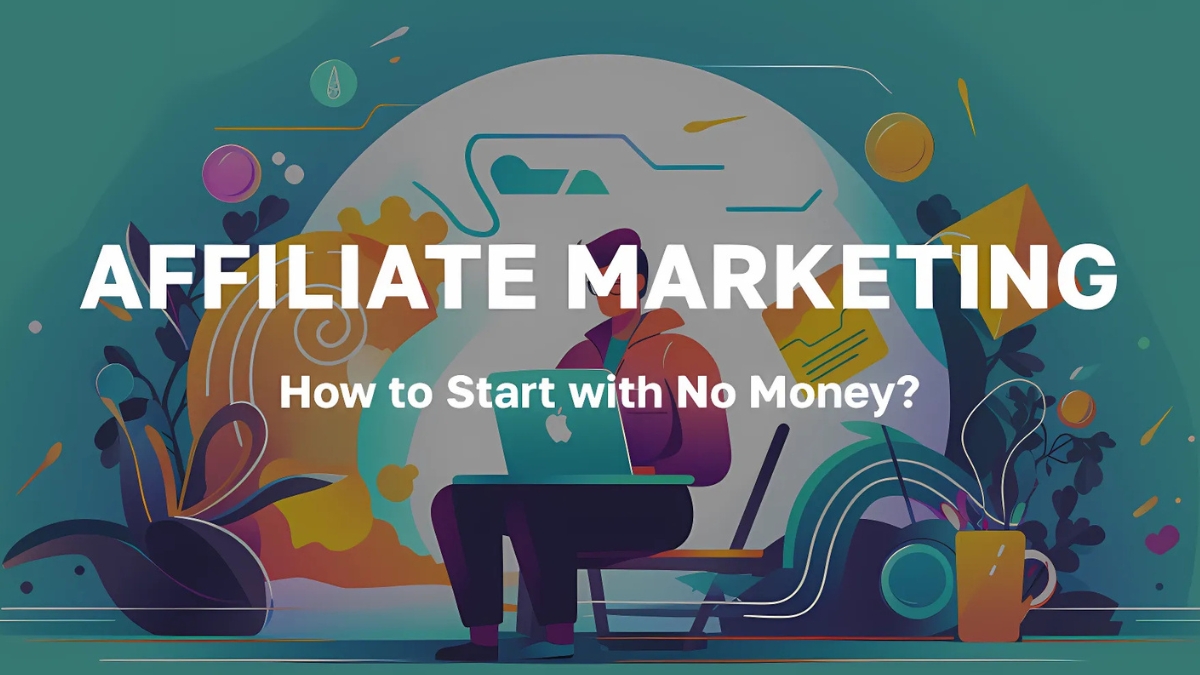
How to Make Money Blogging in 2025: 11 Proven Ways to Monetize Your Blog
Did you know that 33% of bloggers earn over $50,000 per year from their blogs? Whether you’re just starting out or looking to scale your existing blog, turning your passion into profit has never been more achievable! In this comprehensive guide, we’ll explore proven strategies that successful bloggers use to generate income and build sustainable online businesses. From choosing the right monetization methods to implementing effective marketing strategies, you’ll learn everything you need to know about making money through blogging.
Getting Started: Essential Prerequisites for a Money-Making Blog
You know what’s funny? When I first started blogging, I thought all I needed was passion and decent writing skills. Boy, was I wrong! After spending countless hours creating content that barely got any traction, I learned the hard way that successful blogging requires a solid foundation right from the start.
Let’s talk about choosing your niche first. I remember agonizing over whether to start a personal finance blog or a productivity blog – both topics I loved. But here’s the game-changer: I started researching actual audience demographics and search volumes. Using tools like Google Trends and Keywords Everywhere, I discovered that while personal finance was more competitive, it had a much larger audience actively searching for solutions. The key is finding that sweet spot between your interests and market demand.
Setting up your website is crucial, and trust me, this isn’t where you want to cut corners. I initially tried using a cheap shared hosting provider to save money, and my site was slower than a turtle in molasses! After switching to a reliable host like SiteGround or WP Engine (they’re a bit pricier, but worth every penny), my page load times dropped from 6 seconds to under 2 seconds. That made a huge difference in both user experience and SEO.
Content strategy was another eye-opener. Instead of just writing whatever came to mind (my initial approach), I started creating content clusters around main topics. For example, if you’re in the personal finance niche, you might create a cluster around “emergency funds” with related posts about saving strategies, where to keep your emergency fund, and how much you need. This approach helps establish topical authority with search engines and keeps readers engaged longer.

The biggest regret of my early blogging days? Not starting an email list immediately. I waited six months before implementing one, and I missed out on capturing thousands of potential subscribers. Now I recommend using a tool like ConvertKit or MailerLite from day one. Start with a simple but valuable lead magnet – mine was a budgeting spreadsheet template that converted at 45%!
As for SEO, it doesn’t have to be complicated when you’re starting out. Focus on these basics:
- Research and target keywords with manageable competition (I use Ubersuggest for this)
- Write comprehensive content that answers user intent (aim for at least 1,500 words)
- Optimize your images with descriptive alt text and compressed file sizes
- Create clear, SEO-friendly URLs
- Include internal links to related content
One thing that really helped me was treating my blog like a business from day one. Set up Google Analytics and Search Console immediately – you’ll thank yourself later when you have months of data to analyze. I also created a content calendar and stuck to a consistent publishing schedule, which helped build momentum and reader expectations.
Remember, you don’t need everything to be perfect before launching. Start with these fundamentals in place, and you can improve and optimize as you grow. What matters most is getting started and learning from real feedback and data rather than getting stuck in endless preparation.
I’d love to hear what specific questions you have about any of these aspects. Setting up a strong foundation for your blog is crucial, and I’m happy to share more detailed insights about any part of this process!
Unlock your creative potential with Content Masterclass Downloads! These expert guides teach you how to craft compelling, audience-focused content that drives traffic and engagement. Master advanced SEO techniques, storytelling strategies, and content planning to elevate your brand. Perfect for marketers, writers, and entrepreneurs looking to stand out online. Start creating content that captivates and converts today!
Affiliate Marketing: Your First Step to Blogging Income
When I first discovered affiliate marketing, I made the classic rookie mistake – signing up for every program I could find and plastering my blog with random affiliate links. Spoiler alert: That approach bombed spectacularly! After months of earning pennies, I finally figured out what actually works, and I’m excited to share these insights with you.
Here’s the thing about choosing affiliate programs: it’s not just about commission rates. I learned this lesson when I was promoting a high-commission software product that I thought was perfect for my audience. Despite the attractive 40% commission, it barely converted because it wasn’t what my readers truly needed. Now, I follow a simple rule: I only promote products I’ve personally used and would recommend to my best friend.
Speaking of authentic promotion, let’s talk about incorporating affiliate links naturally. One of my most successful affiliate posts is a detailed comparison between two email marketing platforms I’ve used. Instead of just listing features, I shared specific examples of how each platform helped (or frustrated) me while growing my email list. The post generates consistent commissions because readers can feel the authenticity in my personal experience.
Product reviews are where many bloggers miss the mark. I cringe thinking about my early reviews that read like product descriptions copied from Amazon! Here’s what works better: deep-dive reviews that address real pain points. For example, when reviewing a course platform, I documented my entire experience – from the clunky checkout process to the “aha!” moments in specific modules. That level of detail builds trust and drives conversions.
Let’s talk about something less exciting but crucial – legal requirements. I learned about FTC disclosure requirements the hard way when a more experienced blogger pointed out that my generic “this post contains affiliate links” footer wasn’t sufficient. Now I place clear disclosures near my affiliate links, stating something like “I earn a commission if you purchase through this link, but it doesn’t affect your price.” Transparency builds trust!

Want to know my biggest affiliate marketing breakthrough? It came when I stopped treating affiliate content as separate from my regular content strategy. Instead of creating obvious “buying guides,” I started incorporating affiliate recommendations naturally into my how-to posts. For instance, in a post about email marketing strategies, I’d mention the email tool I use when explaining specific tactics. This contextual placement increased my conversion rates by 68%!
Here are some specific conversion boosters that made a huge difference:
- Creating detailed tutorial videos showing how to use affiliate products
- Including real screenshots of my results with the product
- Adding comparison tables that highlight specific use cases
- Using time-sensitive bonuses during product launches
- Following up with email sequences that address common objections
One counterintuitive lesson: sometimes less is more. I removed affiliate links from 60% of my posts and focused on creating comprehensive resources around fewer, carefully chosen products. This actually increased my overall affiliate income because it allowed me to go deeper with each promotion.
The key to sustainable affiliate income isn’t chasing high commission rates or promoting the latest trending product. It’s about becoming a trusted advisor to your audience and only promoting solutions that genuinely help them. When you nail that, the commissions follow naturally.
Remember, affiliate marketing is a long-term game. Focus on building trust first, and the sales will come. What specific niche are you in? I’d be happy to suggest some proven affiliate strategies for your particular audience!
If you’re ready to turn your writing passion into a real income stream, PaidOnlineWritingJobs.com is the perfect place to start. This platform connects aspiring and experienced writers with high-paying, flexible writing jobs across various niches—no advanced degree or prior experience required. Whether you want to write articles, blog posts, or product descriptions, there’s something for everyone.
👉 Join PaidOnlineWritingJobs.com today and start earning money doing what you love—writing!
Creating and Selling Digital Products
You know what’s wild? My first digital product was a complete disaster. I spent three months creating a comprehensive course about productivity systems, only to sell exactly two copies (thanks, Mom!). But that failure taught me the most valuable lesson about digital products: validation comes before creation.
Now, before I create anything, I use what I call the “MVP survey method.” I send a quick survey to my email list asking about their biggest challenges. But here’s the real trick: I include a “pre-sale” option at a discounted price. If at least 5% of respondents are willing to pre-pay, I know there’s real demand. Using this approach, my latest course presold 47 copies before I’d even created the outline!
Let’s talk about choosing the right type of digital product. I’ve experimented with everything from $7 printable planners to $997 comprehensive courses. Here’s what I’ve learned works best for different scenarios:
Low-ticket items ($7-27):
- PDF checklists and worksheets are perfect for building trust
- Templates save people time and convert incredibly well
- Short, focused ebooks that solve specific problems
Mid-ticket items ($47-197):
- Mini-courses that deliver quick wins
- Done-for-you systems and frameworks
- Bundles of related low-ticket items
High-ticket items ($297+):
- Comprehensive courses with step-by-step implementation
- Group coaching programs
- Done-with-you services packaged as products
Pricing is where most creators really stumble. I used to undervalue my products dramatically until a mentor shared this pricing formula: Calculate how many hours your product saves someone, multiply it by their approximate hourly rate, then price your product at 10-20% of that number. This approach helped me confidently raise my course price from $197 to $697, and surprisingly, sales increased!

Let’s get into launch strategy because this is where the magic happens. My most successful launch followed this exact sequence:
- Two months of content seeding (blog posts and emails about the topic)
- A free workshop that provided immediate value
- A 5-day challenge that demonstrated the need for the product
- A 72-hour launch window with increasing urgency
But here’s what most people don’t talk about – sales funnels need constant optimization. I use ThriveCart for my cart pages and have tested everything from button colors to testimonial placement. The biggest conversion boost came from adding a video walkthrough of the product and implementing a two-step checkout process.
Speaking of tools, choose ones that integrate well together. My current stack includes:
- Teachable for course hosting
- ThriveCart for payment processing
- ActiveCampaign for email sequences
- Deadline Funnel for authentic scarcity
One mistake I see creators make is focusing too much on the launch and neglecting evergreen sales. I now use an evergreen webinar funnel that generates consistent sales between launches. The key is setting up automated email sequences that nurture leads and address objections over time.
Remember, your first digital product doesn’t have to be perfect. Start small, get feedback, and improve based on real customer input. I’ve updated my main course 12 times based on student feedback, and each iteration performs better than the last.
What kind of digital product are you thinking about creating? I’d love to share some specific strategies for your particular idea!
Monetizing Through Display Advertising
Getting started with display ads was one of my earliest monetization strategies, but I made some costly mistakes along the way. My biggest blunder? Slapping AdSense ads all over my blog when I was only getting 500 pageviews a month. Not only did it look unprofessional, but I earned a whopping $2.47 in my first month. Talk about disappointing!
Through trial and error, I’ve learned that timing is everything with display ads. The sweet spot for starting with AdSense is around 10,000 pageviews per month. But here’s what I wish someone had told me earlier: don’t get too comfortable with AdSense! I stuck with it far too long, earning about $3-4 per 1,000 pageviews (RPM) when I could have been making much more.
Let’s break down the major ad networks based on my experience:
AdSense:
- Easiest to get approved for
- Low RPMs ($2-5 typically)
- Great for beginners
- Minimal traffic requirements
- But… leaves a lot of money on the table
Mediavine:
- Game-changer for my blog’s income
- Requires 50,000 sessions per month
- Significantly higher RPMs ($15-40)
- Excellent support team
- Professional ad optimization
AdThrive:
- Premium network with highest RPMs
- Requires 100,000 pageviews monthly
- Enhanced reporting tools
- Priority advertising partners
- Top-tier support
The turning point in my display advertising journey came when I qualified for Mediavine. My ad revenue jumped from $200/month with AdSense to over $1,500/month with Mediavine – same traffic, just better optimization and higher-paying ads!

Speaking of optimization, here’s what actually works for maximizing ad revenue without destroying user experience:
- Place your first ad about 25% down your content (not right at the top!)
- Use sticky sidebar ads – they’re less intrusive but highly visible
- Enable “sticky footer” ads on mobile (they consistently outperform)
- Add extra ad slots in longer content (every 500 words or so)
- Test different ad sizes in the same locations
One controversial decision I made was removing ads from my email opt-in pages completely. Yes, I lost some ad revenue, but my email conversion rate increased by 64%, which proved much more valuable in the long run.
Here’s a pro tip that doubled my RPM: focus on increasing time on page. I started breaking up my content into shorter paragraphs, adding relevant images, and using internal links strategically. The longer people stay on your page, the more ad impressions you get, and the more you earn.
For advanced optimization, I use heat mapping tools to understand where readers actually look on my pages. This helped me place ads in high-attention areas without disrupting the reading flow. I also learned to disable certain ad categories that were slowing down my site – sometimes fewer, better-performing ads beat having more ads.
The biggest lesson? Display ads shouldn’t be your only monetization strategy, but they can provide reliable passive income once you reach sufficient traffic levels. I now earn between $3,000-5,000 monthly from display ads alone, which covers all my business expenses and then some.
Want to know what really works for growing your RPMs? Start tracking your content’s scroll depth and session duration. These metrics are gold for optimizing both your content and ad placements. What’s your current traffic level? I’d be happy to suggest some specific strategies for your situation!
Sponsored Content and Brand Partnerships
Let’s talk about something that transformed my blogging career: creating sponsored content that actually resonates with readers. When I first started working with brands, I made the rookie mistake of saying yes to every opportunity that came my way. Trust me, my readers noticed – and they weren’t shy about letting me know when something felt forced or inauthentic.
Here’s what I’ve learned makes sponsored content truly effective: it has to solve a real problem for your audience. For example, one of my most successful sponsored posts was a collaboration with a meal planning app. Instead of just listing features, I shared my genuine struggles with weeknight dinner chaos and how the app helped me develop a better system. The post included actual screenshots of my meal plans, honest pros and cons, and specific tips for making the most of the service. The response was incredible because readers could tell I was sharing real solutions, not just pushing a product.
When it comes to pricing, there’s no one-size-fits-all approach. I started way too low, charging just $200 for sponsored posts that took hours to create. Now I base my rates on several factors: my monthly page views (currently around 100,000), email subscriber count, social media engagement rates, and most importantly – the time and effort required to create high-quality content that serves both the brand and my readers. A good rule of thumb is to start with your baseline hourly rate and multiply it by the hours needed, then add factors for your reach and influence.
Building a professional media kit was a game-changer for attracting the right sponsors. Mine includes key metrics like monthly unique visitors, subscriber demographics, and engagement rates. But here’s what really sets it apart: instead of just listing numbers, I include mini case studies of previous successful partnerships. This shows potential sponsors exactly what kind of results they can expect.

The trickiest part? Maintaining reader trust while monetizing. I’ve developed a few non-negotiable rules: I only partner with brands I genuinely use and believe in, I’m always transparent about sponsored content (going beyond just the required disclosures), and I maintain editorial control over the content. Sometimes this means turning down lucrative opportunities that don’t align with my values or my audience’s needs.
Remember that successful sponsored content isn’t just about the money – it’s about creating value for everyone involved. Your readers should walk away with helpful information or solutions, the brand should receive authentic exposure to their target audience, and you should feel proud of the content you’ve created. When you hit this sweet spot, sponsored content becomes a win-win-win situation.
One strategy that’s worked particularly well for me is creating a partnership information page on my site. This page outlines my approach to sponsored content, shares testimonials from previous brand partners, and sets clear expectations for potential collaborations. It’s helped me attract more aligned opportunities and saved time on back-and-forth emails with brands that aren’t a good fit.
The most important lesson? Stay true to your voice and your audience’s needs. When you do that, sponsored content becomes an authentic extension of your regular content, not a jarring interruption.
Looking to turn your writing skills into real income? PaidOnlineWritingJobs.com connects you with verified writing gigs that fit any schedule and skill level. Whether you’re starting out or want to expand your freelance career, this platform offers flexible opportunities to get paid for your work. Sign up today at PaidOnlineWritingJobs.com and start earning as a writer from anywhere!
Offering Services Through Your Blog
Let me tell you about my journey into offering services through my blog – it’s been quite the rollercoaster! When I first started, I was honestly terrified of putting myself out there as a “expert.” But here’s the thing: your blog readers are already looking to you for guidance, making them perfect potential clients.
I remember my first consulting client like it was yesterday. They’d been following my blog posts about content strategy for months before reaching out. That taught me something crucial: your blog itself is your most powerful marketing tool. Every post you write is essentially a preview of your expertise and teaching style.
One of my biggest early mistakes? Not having clear service packages. I started out with a vague “contact me for consulting” page and ended up spending hours on discovery calls that went nowhere. Now I have three distinct service tiers: a one-hour strategy session, a monthly coaching package, and a comprehensive three-month consulting program. Each package clearly outlines what clients get, the time commitment, and the investment required.
Speaking of pricing – this is where so many bloggers stumble. I know I did! Initially, I severely underpriced my services because I was worried about scaring people away. Here’s what I learned: when you price too low, you actually attract clients who don’t value your expertise. I now use value-based pricing, considering factors like:
- The specific results clients can expect
- The time and expertise required
- The market rate for similar services
- The transformation I’m providing
Managing client relationships has been an interesting learning curve. One absolute game-changer was implementing a proper onboarding system. I now have a welcome packet that includes a questionnaire, communication guidelines, and expectations for both parties. This has dramatically reduced misunderstandings and helped set professional boundaries from day one.

Here’s something nobody tells you about service-based income: it can be feast or famine if you’re not careful. I’ve developed several strategies to create more stable income:
First, I offer retainer packages where clients commit to working together for 3-6 months. This provides consistent income and better results for clients since we can work on longer-term strategies. Second, I created a waitlist system when I’m fully booked, which helps maintain a steady pipeline of potential clients.
Want to know the most valuable lesson I’ve learned about scaling services? You need systems! I spent way too much time reinventing the wheel with each new client until I created standard operating procedures for everything from onboarding to delivery to follow-up. I use tools like Dubsado to automate invoicing and contract signing, and Asana for project management.
One particularly effective strategy has been creating a signature framework for my services. Instead of just offering generic consulting, I developed a specific methodology that I use with clients. This not only improves results but also makes my services more unique and marketable.
The key to success with blog-based services is maintaining quality while growing. I’ve found that the sweet spot is working with fewer clients at a higher price point rather than trying to serve everyone. This allows me to provide exceptional value and generate testimonials that attract more ideal clients.
Remember, transitioning from blogger to service provider isn’t just about adding a “Work with Me” page to your site. It’s about strategically positioning your expertise and creating systems that allow you to serve clients effectively while maintaining your sanity!
Also, don’t forget to leverage your blog content to support your services. I regularly write posts that address common client questions and challenges, which not only helps my SEO but also demonstrates my expertise to potential clients. This creates a natural bridge between your free content and paid services.
Advanced Monetization Strategies
I’ve spent years exploring different ways to monetize my online presence, and let me tell you – diversifying your income streams is absolutely crucial! Let me share what I’ve learned about advanced monetization strategies that go beyond the basics.
The game-changer for my business was launching a membership community. But here’s what most people don’t tell you: it’s not just about slapping a paywall on some content and calling it a day. My first attempt at a membership site flopped because I focused too much on content and not enough on community. The turning point came when I shifted to creating genuine connections among members. Now, my community includes monthly live Q&A sessions, a private Slack channel, and peer accountability groups. The retention rate skyrocketed when members started forming real relationships with each other.
Virtual events were another eye-opener for me. I remember my first virtual workshop – I was so nervous that I over-prepared 50 slides for a one-hour session! These days, I keep the presentation portion to 30 minutes max and focus on interactive elements. One strategy that works incredibly well is hosting “implementation workshops” where participants actually work on their projects during the session. The transformation happens right there, and the results have been amazing.
When it comes to physical products, I learned some hard lessons about inventory management. My first product launch was a complete nightmare – I ended up with 500 journals sitting in my garage because I overestimated demand. Now I use print-on-demand services for most physical products, and I test market demand with pre-orders before committing to bulk production runs. The margins might be smaller, but the reduced risk and stress make it worthwhile.
Integrating YouTube and podcasting has been a game-changer for my brand. Here’s a pro tip that transformed my content strategy: I now record video content first, extract the audio for my podcast, and then use the transcript as a basis for blog posts. This “content multiplication” approach has helped me reach different audience segments while maintaining consistent messaging across platforms.

Let me share some specific numbers to give you an idea of how multiple income streams can work together. In a typical month, my revenue breakdown looks something like this:
- Membership site: 40% of revenue
- Virtual workshops: 20%
- Physical products: 15%
- YouTube ad revenue: 10%
- Affiliate marketing: 10%
- One-on-one consulting: 5%
The beauty of this model is that if one income stream takes a hit, the others can help maintain overall stability. For instance, when my YouTube ad revenue dropped during algorithm changes, my membership income kept things steady.
One strategy that’s been particularly effective is creating “bundles” that combine different offerings. For example, I’ll include access to my membership site with virtual workshop tickets, or offer exclusive physical products to my community members first. This cross-pollination helps drive sales across all platforms.
Speaking of platforms, don’t underestimate the power of integration. I use Circle for my community platform, which integrates beautifully with Zoom for live events and Stripe for payments. Having these systems talk to each other saves countless hours of administrative work and provides a seamless experience for members.
The biggest lesson I’ve learned about advanced monetization? It’s all about creating ecosystems, not just products. Each offering should complement the others and provide clear value progression for your audience. For instance, someone might start with my YouTube content, join a virtual workshop, and then become a community member for ongoing support.
Remember, though – you don’t need to implement everything at once. Start with one additional revenue stream, perfect it, then add another. It’s better to do a few things really well than to spread yourself too thin trying to do everything at once.
The key is to always keep your audience’s needs at the center of your monetization strategy. When you solve real problems and create genuine value, the money follows naturally. And don’t forget to regularly survey your audience about what they need – some of my most successful offerings came directly from member suggestions!
Making money through blogging requires dedication, strategic planning, and consistent effort. By implementing these proven monetization strategies and continuously adapting to industry changes, you can build a profitable blog that generates sustainable income. Remember, success doesn’t happen overnight, but with persistence and the right approach, you can join the ranks of successful bloggers earning a full-time income from their passion. Start implementing these strategies today, and take the first step toward your blogging success story!
In conclusion, if you’re looking for a flexible and rewarding way to earn money online, PaidOnlineWritingJobs.com offers the tools, opportunities, and support to help you succeed as a freelance writer. With thousands of writing gigs available and no strict experience requirements, it’s never been easier to get started.
👉 Don’t wait—sign up at PaidOnlineWritingJobs.com today and start building your writing career from the comfort of your home!





